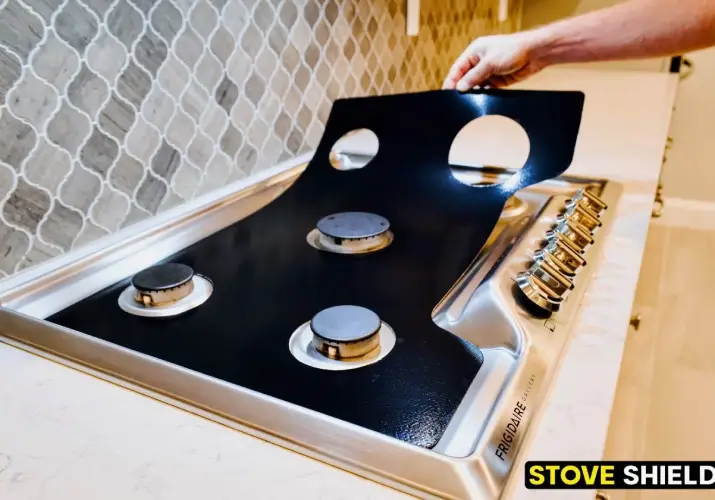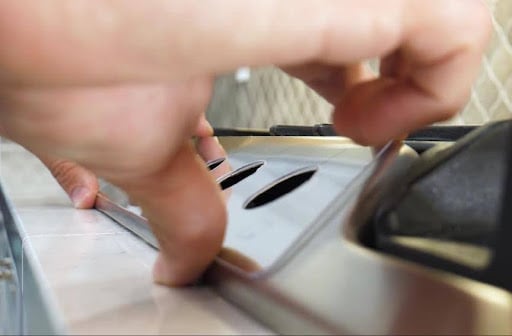Stove top grates play a crucial role in cooking performance by providing a stable surface for cookware, ensuring even heat distribution, and enhancing the efficiency of gas stove burners. The material of these grates significantly impacts durability, heat retention, and ease of maintenance.
Choosing the right material ensures that gas stove top grates withstand high temperatures, resist wear and tear, and remain easy to clean. Some materials offer superior heat retention for better cooking results, while others prioritize durability or corrosion resistance. Understanding the various materials used in stove top grates helps make an informed decision about care, longevity, and overall cooking experience.
Common Materials Used for Gas Stove Grates
Stove top grates come in various materials, each offering distinct benefits in heat retention, durability, and maintenance. The choice of material affects cooking efficiency and long-term performance. Below are the most commonly used materials in both modern and traditional stovetops:
1. Cast Iron Grates
Pros: Cast iron grates are known for their exceptional heat retention, ensuring even cooking. They are highly durable and often coated with porcelain enamel for added protection.
Cons: Bare cast iron requires regular seasoning and maintenance to prevent rust. Additionally, these grates are heavy, making them harder to handle.
Best for: Gas stoves, professional cooking setups, and those who prioritize heat retention.
2. Porcelain-Coated Cast Iron Grates
Pros: These grates offer the durability and heat retention of cast iron while being easier to clean. The porcelain coating adds a layer of rust resistance.
Cons: Over time, the porcelain coating can chip, exposing the cast iron underneath and leading to rust.
Best for: Home cooks seeking a balance between durability and ease of maintenance.
3. Stainless Steel Grates
Pros: Stainless steel grates are lightweight, corrosion-resistant, and have a sleek, modern aesthetic. They require minimal maintenance.
Cons: They do not retain heat as well as cast iron and may warp under extreme temperatures.
Best for: High-end stoves and kitchens with a minimalist, modern design.
4. Enamel-Coated Steel Grates
Pros: These grates are budget-friendly, resistant to corrosion, and available in multiple colors to match different kitchen styles.
Cons: The enamel coating can chip or wear over time, exposing the metal to rust and degradation.
Best for: Cost-conscious consumers looking for an affordable yet visually appealing option.
5. Brass Grates
Pros: Brass grates provide excellent heat conductivity, making them ideal for precise temperature control. They also add a unique, premium aesthetic to the kitchen.
Cons: They are expensive and require regular polishing to maintain their shine and prevent tarnishing.
Best for: Luxury gas ranges and professional kitchens that prioritize performance and aesthetics.
6. Aluminum Grates
Pros: Aluminum grates are lightweight, inexpensive, and offer decent heat conductivity.
Cons: They are prone to warping under high heat and are not as durable as other materials.
Best for: Portable stoves and budget-friendly stove models where weight and cost are key considerations.
Comparing Gas Stove Grate Materials: Pros and Cons
When selecting stove top grates, it’s essential to compare their heat retention, durability, maintenance requirements, and cost. Below is a side-by-side comparison of common grate materials to help different types of users make an informed choice.
| Material | Heat Retention | Durability | Maintenance | Cost | Best For |
| Cast Iron | ★★★★★ Excellent | ★★★★★ Very Durable | Requires seasoning (if uncoated) | $$ – Moderate | Professional chefs, gas stoves, serious home cooks |
| Porcelain-Coated Cast Iron | ★★★★★ Excellent | ★★★★ Durable | Easy to clean, coating may chip | $$ – Moderate | Home cooks wanting durability & easier maintenance |
| Stainless Steel | ★★★ Moderate | ★★★★ Durable | Low maintenance, can warp under extreme heat | $$$ – Expensive | High-end stoves, minimalist kitchens |
| Enamel-Coated Steel | ★★★ Moderate | ★★★ Average | Easy to clean, coating may chip over time | $ – Budget-Friendly | Budget-conscious buyers, color customization |
| Brass | ★★★★ Good | ★★★★ Durable | Requires polishing to prevent tarnish | $$$$ – Premium | Luxury gas ranges, precision cooking |
| Aluminum | ★★ Fair | ★★ Less Durable | Prone to warping, easy to clean | $ – Low | Portable stoves, cost-conscious users |
Best Choices for Different Users
- Home Cooks: Porcelain-coated cast iron offers a great balance between durability, heat retention, and easy maintenance.
- Professional Chefs: Cast iron or brass grates provide superior heat retention and control, ideal for precise cooking.
- Budget-Conscious Buyers: Enamel-coated steel or aluminum grates are affordable and easy to clean, though they may not last as long.
- Luxury Kitchen Owners: Brass or stainless steel grates enhance aesthetics and offer a high-end finish.
Choosing the right material depends on cooking needs, budget, and maintenance preferences.
How to Maintain and Clean Different Burner Grate Materials
Proper maintenance extends the life of stove top grates and ensures optimal cooking performance. Cleaning methods vary depending on the material, as some grates require more care to prevent rust or damage. Below are cleaning and maintenance tips for each type.
Cast Iron Grates
- Cleaning Tips: Avoid soaking cast iron in water, as it can lead to rust. Instead, scrub with a stiff brush and a paste of baking soda and water. For stubborn grease, heat the grates on the stove to burn off residue.
- Best Cleaning Method: Wipe with a damp cloth after cooking, and occasionally rub with vegetable oil to maintain seasoning.
- Preventing Rust: Store in a dry place and season regularly with oil to create a protective barrier.
Porcelain-Coated Cast Iron Grates
- Cleaning Tips: Use mild dish soap and a non-abrasive sponge to prevent chipping the coating. Avoid steel wool or harsh chemicals.
- Best Cleaning Method: Soak in warm, soapy water and gently scrub with a soft brush.
- Preventing Discoloration: Wipe spills immediately and avoid using metal utensils that could scratch the enamel.
Stainless Steel Grates
- Cleaning Tips: Use warm soapy water and a soft sponge to remove grease. For tougher stains, apply a paste of baking soda and vinegar.
- Best Cleaning Method: Polish with stainless steel cleaner for a streak-free finish. Avoid abrasive scouring pads to prevent scratches.
- Preventing Discoloration: Keep grates dry and avoid exposure to acidic foods that can cause staining.
Enamel-Coated Steel Grates
- Cleaning Tips: Clean with mild soap and a non-abrasive sponge. Avoid soaking for long periods, as water may seep through chipped areas.
- Best Cleaning Method: Soak in soapy water for a few minutes, then gently scrub with a soft cloth.
- Preventing Rust: Check for chips regularly. If the enamel is damaged, replace the grates or apply a rust-resistant coating.
Brass Grates
- Cleaning Tips: Use a brass cleaner or a mixture of lemon juice and baking soda to remove tarnish. Avoid excessive water exposure.
- Best Cleaning Method: Polish with a soft cloth to maintain its shine and prevent oxidation.
- Preventing Tarnishing: Store in a dry place and polish regularly to maintain the natural luster.
Aluminum Grates
- Cleaning Tips: Wash with mild soap and warm water, avoiding harsh chemicals that can cause corrosion.
- Best Cleaning Method: Soak briefly in soapy water, scrub with a non-abrasive sponge, and rinse thoroughly.
- Preventing Warping: Avoid exposing aluminum grates to extreme heat for prolonged periods.
By following these maintenance and cleaning guidelines, you can extend the life of your stove top grates while ensuring optimal cooking performance.
Choosing the Right Grate Material for Your Stove
Selecting the best stove top grate material depends on factors like cooking frequency, budget, and maintenance preferences. Different stove types also have specific compatibility requirements, so it’s important to choose a material that enhances performance while fitting your needs.
Factors to Consider When Choosing Grate Material
- Cooking Frequency: If you cook daily, durable materials like cast iron or brass are ideal due to their heat retention and longevity. Occasional cooks may prefer stainless steel or enamel-coated grates, which require less maintenance.
- Budget: Enamel-coated steel and aluminum are budget-friendly options, while brass and stainless steel are premium choices with a higher price tag.
- Maintenance Effort: If you prefer easy-to-clean grates, stainless steel or porcelain-coated cast iron are great choices. Cast iron and brass require more upkeep to prevent rust and tarnishing.
- Heat Retention Needs: Professional chefs or serious home cooks may prioritize cast iron for its superior heat retention, while casual cooks may find aluminum or steel sufficient.
- Aesthetic Preferences: If you want a modern, sleek look, stainless steel is a great option. For a classic, professional kitchen appearance, cast iron or brass grates are excellent choices.
Best Grate Materials for Different Stove Types
| Stove Type | Recommended Grate Material | Why? |
| Gas Stoves | Cast iron, brass, porcelain-coated cast iron | High heat retention, durability, and excellent flame control. |
| Electric Stoves | Stainless steel, enamel-coated steel | Lightweight, corrosion-resistant, and easy to clean. |
| Induction Stoves | N/A – Induction stoves don’t use grates | Induction cookware sits directly on the glass surface. |
For gas stoves, cast iron and brass are the best choices due to their ability to withstand high temperatures and distribute heat evenly. Electric stoves benefit from lightweight and easy-to-clean materials like stainless steel or enamel-coated steel. Since induction stoves do not use grates, choosing induction-compatible cookware is more important than the grate material itself.
By considering your cooking habits, budget, and stove type, you can select the perfect grate material that balances durability, performance, and maintenance ease.
Conclusion
Stove top grates play a crucial role in cooking performance, heat distribution, and kitchen aesthetics. Choosing the right material ensures durability, ease of maintenance, and optimal cooking results.
- Cast Iron Grates offer superior heat retention and durability but require maintenance to prevent rust.
- Porcelain-Coated Cast Iron Grates provide easier cleaning and rust resistance but can chip over time.
- Stainless Steel Grates are lightweight, corrosion-resistant, and modern-looking but retain less heat.
- Enamel-Coated Steel Grates are affordable and corrosion-resistant but prone to chipping.
- Brass Grates conduct heat efficiently and add a luxury aesthetic but require polishing.
- Aluminum Grates are lightweight and budget-friendly but can warp under high heat.
Best Grate Material Based on Needs and Cooking Style
- For professional chefs and frequent home cooks: Cast iron or brass grates offer excellent heat retention and durability.
- For budget-conscious buyers: Enamel-coated steel or aluminum grates provide an affordable option with decent performance.
- For easy maintenance and modern kitchens: Stainless steel or porcelain-coated cast iron grates offer a balance of durability and easy cleaning.
- For gas stoves: Cast iron and brass grates are the best choices for heat control and longevity.
- For electric stoves: Stainless steel or enamel-coated grates are lightweight and easy to maintain.
Final Tips for Extending the Lifespan of Your Gas Stove Grates
- Regular Cleaning: Wipe down grates after each use to prevent grease buildup.
- Use Non-Abrasive Cleaners: Avoid harsh scrubbing pads or chemicals that can damage coatings.
- Prevent Rust and Corrosion: Keep cast iron grates seasoned and ensure all grates are completely dry after cleaning.
- Handle with Care: Avoid dropping grates, as this can lead to chipping or warping.
- Inspect for Wear and Tear: Replace grates if they become excessively damaged or rusted to maintain optimal cooking performance.
By selecting the right grate material and following proper maintenance practices, you can enhance your stove’s efficiency and extend the lifespan of your grates for years to come.
Disclaimer: All information contained within this article is for informational purposes. always refer to your specific stove manual for safety and use instructions and guidance.


